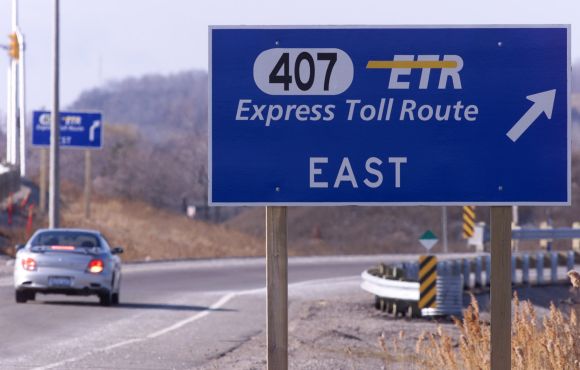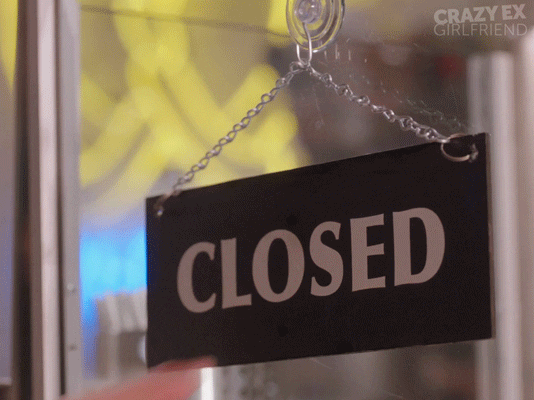The General Land Office of Texas disputed the Interior Department’s decision to continue protection of the golden-cheeked warbler as an endangered species. The Fifth Circuit found the Department’s process flawed: “The Service recited this standard, but a careful examination of its analysis shows that the Service applied an inappropriately heightened one.Specifically, to proceed to the twelve-month review stage, the Service required the delisting petition to contain information that the Service had not considered in its five-year review that was sufficient to refute that review’s conclusions. . . .The Service thus based its decision to deny the delisting petition on an incorrect legal standard. Consequently, we conclude that the Service’s decision was arbitrary and capricious. We therefore vacate that decision and remand for the Service to evaluate the delisting petition under the correct legal standard.” General Land Office of Texas v. U.S. Dep’t of the Interior, No. 19-50178 (Jan. 15, 2020) (emphasis in original).
standard, but a careful examination of its analysis shows that the Service applied an inappropriately heightened one.Specifically, to proceed to the twelve-month review stage, the Service required the delisting petition to contain information that the Service had not considered in its five-year review that was sufficient to refute that review’s conclusions. . . .The Service thus based its decision to deny the delisting petition on an incorrect legal standard. Consequently, we conclude that the Service’s decision was arbitrary and capricious. We therefore vacate that decision and remand for the Service to evaluate the delisting petition under the correct legal standard.” General Land Office of Texas v. U.S. Dep’t of the Interior, No. 19-50178 (Jan. 15, 2020) (emphasis in original).
Monthly Archives: January 2020
 “[S]tatutory damages do not only approximate a copyright owner’s consequential damages. Statutory damages also serve an independent deterrent purpose; therefore, mitigation rules do not wholly preclude recovery of statutory damages.” Energy Intelligence Group, Inc. v. Kayne Anderson Capital Advisors, LP, No. 18-20350 (Jan .15, 2020). This case also provides a case study in the multiplication of copyright damages resulting from the unauthorized recirculation of a copyrighted publication.
“[S]tatutory damages do not only approximate a copyright owner’s consequential damages. Statutory damages also serve an independent deterrent purpose; therefore, mitigation rules do not wholly preclude recovery of statutory damages.” Energy Intelligence Group, Inc. v. Kayne Anderson Capital Advisors, LP, No. 18-20350 (Jan .15, 2020). This case also provides a case study in the multiplication of copyright damages resulting from the unauthorized recirculation of a copyrighted publication.
 The arbitration clause in Kemper Corporate Servcs., Inc. v. Computer Sciences Corp., No. 18-11276 (Jan. 10, 2020), said that “decisions shall be in writing and shall state the findings of fact and conclusions of law upon which the decision is based, provided that such decision may not (i) award consequential, punitive, special, incidental or exemplary damages or any amounts in excess of the limitations delineated in” other provisions of the parties’ contracts (emphasis added). The unsuccessful party questioned whether the arbitrator had authority to “categorize damages as consequential or direct,” but the Fifth Circuit disagreed, concluding: “For the arbitrator to resolve the dispute between CSC and Kemper, which could include awarding damages, he had to categorize the potential damages into the permitted and the prohibited categories.” The Court then affirmed under the highly-deferential standard of review as stated in BNSF R.R. Co. v. Alstom Transp., 777 F.3d 785 (5th Cir. 2015).
The arbitration clause in Kemper Corporate Servcs., Inc. v. Computer Sciences Corp., No. 18-11276 (Jan. 10, 2020), said that “decisions shall be in writing and shall state the findings of fact and conclusions of law upon which the decision is based, provided that such decision may not (i) award consequential, punitive, special, incidental or exemplary damages or any amounts in excess of the limitations delineated in” other provisions of the parties’ contracts (emphasis added). The unsuccessful party questioned whether the arbitrator had authority to “categorize damages as consequential or direct,” but the Fifth Circuit disagreed, concluding: “For the arbitrator to resolve the dispute between CSC and Kemper, which could include awarding damages, he had to categorize the potential damages into the permitted and the prohibited categories.” The Court then affirmed under the highly-deferential standard of review as stated in BNSF R.R. Co. v. Alstom Transp., 777 F.3d 785 (5th Cir. 2015).
Among other challenges to a $65 million arbitration award, Catic USA disputed the claimants’ damages calculation. The Fifth Circuit rejected the challenge, in part because the shortcomings were of Catic’s own making: “Catic USA does not contest that AVIC’s anticipated rate of return was 15% or that the panel employed an appropriate discount rate; instead, it attacks the panel’s assumption that AVIC’s investment did (or would) generate profits. It is true that, although the amount of lost profits may be estimated, claimants generally ‘must show that there would [have been] some future profits’ but for the breach. But in this case, Catic USA has refused to provide the relevant information, and it was thus within the arbitration panel’s authority to infer that AVIC’s investment was indeed profitable.” Soaring Wind Energy LLC v. Catic USA Inc., No. 18-11192 (Jan. 7, 2020) (citation omitted, emphasis added). .
 Catic USA challenged a $63 million arbitration award about a Chinese wind-energy venture, complaining inter alia, that the panel was assembled unfairly: “[O]ne side (the plaintiffs) appointed five arbitrators, the other side (Catic USA and Thompson) only two.'” The Fifth Circuit disagreed, noting that the parties’ contract identified “seven total, signatory ‘Members,'” each of whom had the right to name an arbitrator in the event of a dispute. “This case involves two sides, but, more importantly, it features seven members; suppose Eris had tossed the Apple of Discord into a Soaring Wind conference room, prompting a free-for-all among the parties–the arbiter selection process would have remained the same.” Soaring Wind Energy LLC v. Catic USA Inc., No. 18-11192 (Jan. 7, 2020). The Court reminded that as a general matter: “It is not the court’s role to rewrite the contract between sophisticated market participants, allocating the risk of an agreement after the fact, to suit the court’s sense of equity or fairness.”
Catic USA challenged a $63 million arbitration award about a Chinese wind-energy venture, complaining inter alia, that the panel was assembled unfairly: “[O]ne side (the plaintiffs) appointed five arbitrators, the other side (Catic USA and Thompson) only two.'” The Fifth Circuit disagreed, noting that the parties’ contract identified “seven total, signatory ‘Members,'” each of whom had the right to name an arbitrator in the event of a dispute. “This case involves two sides, but, more importantly, it features seven members; suppose Eris had tossed the Apple of Discord into a Soaring Wind conference room, prompting a free-for-all among the parties–the arbiter selection process would have remained the same.” Soaring Wind Energy LLC v. Catic USA Inc., No. 18-11192 (Jan. 7, 2020). The Court reminded that as a general matter: “It is not the court’s role to rewrite the contract between sophisticated market participants, allocating the risk of an agreement after the fact, to suit the court’s sense of equity or fairness.”
 In this election year, the Texas State Bar’s Judicial Poll has special significance. If you’re a Texas lawyer, haven’t voted yet and can’t locate the email from the Bar about it, just click here for your ballot by February 4.
In this election year, the Texas State Bar’s Judicial Poll has special significance. If you’re a Texas lawyer, haven’t voted yet and can’t locate the email from the Bar about it, just click here for your ballot by February 4.
“Repeatedly emphasizing that the classification turns on whether the deadline is in a statute, the Supreme Court has held that the time limits in Civil Rule 23(f), Appellate Rule 4(a)(5)(C), Criminal Rules 33 and 45, and Bankruptcy Rules 4004 and 9006 are not jurisdictional. The Court has not addressed the rule we confront, Civil Rule 50(b). But its reasoning in these cases—that “[i]t is axiomatic that the Federal Rules of Civil Procedure do not create or withdraw federal jurisdiction,”—compels the conclusion that Rule 50(b) is also a claim-processing requirement. We therefore hold that Rule 50 does not impose a jurisdictional deadline.” Escribiano v. Travis County, No. 19-50236 (Jan. 10, 2020).
 “The district court’s order to stay and administratively close [Appellant]’s case is not a final order for purposes of [Federal Arbitration Act] § 16(a)(3); the collateral order doctrine does not apply to orders concerning arbitration governed by the FAA; and § 1292(a)(3) is inapplicable to referrals to arbitration in admiralty cases that do not determine a party’s substantive rights or liabilities.” Psara Energy, Ltd. v. Advantage Arrow Shipping, LLC, No. 19-40071 (Jan. 9, 2020).
“The district court’s order to stay and administratively close [Appellant]’s case is not a final order for purposes of [Federal Arbitration Act] § 16(a)(3); the collateral order doctrine does not apply to orders concerning arbitration governed by the FAA; and § 1292(a)(3) is inapplicable to referrals to arbitration in admiralty cases that do not determine a party’s substantive rights or liabilities.” Psara Energy, Ltd. v. Advantage Arrow Shipping, LLC, No. 19-40071 (Jan. 9, 2020).
 Southern Credentialing showed that Hammond infringed its “credentialing packets” used for hospitals in making privilege decisions. The trial court found non-willful infringement and awarded statutory damages; Hammond appealed, arguing that such damages were not available when the alleged infringement occurred before Southern Credentialing registered its copyrights. The Fifth Circuit held: “[S]ection 412 bars statutory damage awards when a defendant violates one of the six exclusive rights of a copyright holder preregistration and violates a different right in the same work after registration. Any other conclusion would be inconsistent with the Copyright Act, which does not distinguish between ‘different’ infringements.” Southern Credentialing Support Services, LLC v. Hammond Surgical Hospital LLC, No. 18-31160 (Jan. 9, 2020).
Southern Credentialing showed that Hammond infringed its “credentialing packets” used for hospitals in making privilege decisions. The trial court found non-willful infringement and awarded statutory damages; Hammond appealed, arguing that such damages were not available when the alleged infringement occurred before Southern Credentialing registered its copyrights. The Fifth Circuit held: “[S]ection 412 bars statutory damage awards when a defendant violates one of the six exclusive rights of a copyright holder preregistration and violates a different right in the same work after registration. Any other conclusion would be inconsistent with the Copyright Act, which does not distinguish between ‘different’ infringements.” Southern Credentialing Support Services, LLC v. Hammond Surgical Hospital LLC, No. 18-31160 (Jan. 9, 2020).
 Judicial-estoppel issues often surface when a debtor a seeks to assert a claim and dispute arises about the adequacy of the debtor’s disclosures about that claim. Wal-Mart Stores, Inc. v. Parker involved a debtors personal-injury claim, and the Fifth Circuit concluded: “After declining to apply judicial estoppel and thus allowing Parker to proceed with his personal injury suit against Wal-Mart, the bankruptcy court ordered Parker to turn over any recovery to the Chapter 13 trustee to be administered for the benefit of creditors. In cases similar to Wal-Mart’s—when a potential defendant argues that a debtor is estopped from bringing a lawsuit for failure to disclose it to the bankruptcy court—we have held that, while a debtor may be estopped from pursuing the claim on his own behalf, his bankruptcy trustee is not similarly estopped and may pursue the claim for the benefit of the creditors.” No. 18-30378 (Jan. 8, 2020). “Though the bankruptcy court’s decision is certainly odd and not the route we would have chosen, we cannot say that it contained clearly erroneous factual findings or the application of incorrect legal standards that amount to an abuse of discretion.”
Judicial-estoppel issues often surface when a debtor a seeks to assert a claim and dispute arises about the adequacy of the debtor’s disclosures about that claim. Wal-Mart Stores, Inc. v. Parker involved a debtors personal-injury claim, and the Fifth Circuit concluded: “After declining to apply judicial estoppel and thus allowing Parker to proceed with his personal injury suit against Wal-Mart, the bankruptcy court ordered Parker to turn over any recovery to the Chapter 13 trustee to be administered for the benefit of creditors. In cases similar to Wal-Mart’s—when a potential defendant argues that a debtor is estopped from bringing a lawsuit for failure to disclose it to the bankruptcy court—we have held that, while a debtor may be estopped from pursuing the claim on his own behalf, his bankruptcy trustee is not similarly estopped and may pursue the claim for the benefit of the creditors.” No. 18-30378 (Jan. 8, 2020). “Though the bankruptcy court’s decision is certainly odd and not the route we would have chosen, we cannot say that it contained clearly erroneous factual findings or the application of incorrect legal standards that amount to an abuse of discretion.”
 A putative class action failed for lack of commonality: “Every member of the putative class received the same allegedly threatening letter from Medicredit. But the FDCPA penalizes empty threats, not all threats. So the letter alone is insufficient to certify a class. As in Dukes, there is no ‘glue’ here ‘holding the alleged reasons for all those [letters] together’—namely, evidence of a uniform intention by Seton regarding suit. So it is likewise ‘impossible to say that examination of all the class members’ claims for relief will produce a common answer to the crucial question’ why was I threatened.” Flecha v. Medicredit, Inc., No. 18-50551 (Jan. 8, 2020) (citations omitted, emphasis in original).
A putative class action failed for lack of commonality: “Every member of the putative class received the same allegedly threatening letter from Medicredit. But the FDCPA penalizes empty threats, not all threats. So the letter alone is insufficient to certify a class. As in Dukes, there is no ‘glue’ here ‘holding the alleged reasons for all those [letters] together’—namely, evidence of a uniform intention by Seton regarding suit. So it is likewise ‘impossible to say that examination of all the class members’ claims for relief will produce a common answer to the crucial question’ why was I threatened.” Flecha v. Medicredit, Inc., No. 18-50551 (Jan. 8, 2020) (citations omitted, emphasis in original).
 The Fifth Circuit noted two limits on Fed. R. Evid. 407, which excludes evidence of “subsequent remedial measures” –
The Fifth Circuit noted two limits on Fed. R. Evid. 407, which excludes evidence of “subsequent remedial measures” –
1. In an overtime-pay case, with respect to an employer’s internal audit about employee classifications, the Court observed that “by themselves, post-accident investigations would not make the event ‘less likely to occur,’ only the actual implemented changes make it so.”
2. And as to exhibits in which the employer actually reclassified various employees, the Court said: “[F]ederal law mandates that Shipcom pay its nonexempt employees overtime wages. Because Shipcom is legally obligated to take these measures to comply with the FLSA, excluding evidence of Plaintiffs’ reclassification to nonexempt status would not further a social policy of encouraging employers to correctly classify their employees in the future.”
Novick v. Shipcom Wireless, Inc., No. 19-20056 (Jan. 7, 2020) (citations omitted, emphasis added).
 An issue in Novick v. Shipcom Wireless, Inc., was whether the district court erred in not letting the defendant employer open and close arguments, when it had the burden of proof on the remaining disputed issues in an overtime-pay case. The Fifth Circuit held: “Shipcom has not cited, and we have not found, any case where this court has held a trial court’s decision as to which party presents argument first to be an abuse of discretion. Many legal presentations, like the FLSA claim in this case, have a beginning, a middle, and an end. It was within the discretion of the trial court to decide that in this case the jury should hear the beginning of the story first, even though the legal effect of the beginning was not in dispute.” No. 19-20056 (Jan. 7, 2020).
An issue in Novick v. Shipcom Wireless, Inc., was whether the district court erred in not letting the defendant employer open and close arguments, when it had the burden of proof on the remaining disputed issues in an overtime-pay case. The Fifth Circuit held: “Shipcom has not cited, and we have not found, any case where this court has held a trial court’s decision as to which party presents argument first to be an abuse of discretion. Many legal presentations, like the FLSA claim in this case, have a beginning, a middle, and an end. It was within the discretion of the trial court to decide that in this case the jury should hear the beginning of the story first, even though the legal effect of the beginning was not in dispute.” No. 19-20056 (Jan. 7, 2020).
 Paine Snider v. L-3 Communications involved a company’s legal malpractice claim against a firm that represented it in corporate matters, when a firm partner helped a company employee with a discrimination case against the company. The Fifth Circuit affirmed the dismissal of most of the malpractice claim on limitations grounds, observing:
Paine Snider v. L-3 Communications involved a company’s legal malpractice claim against a firm that represented it in corporate matters, when a firm partner helped a company employee with a discrimination case against the company. The Fifth Circuit affirmed the dismissal of most of the malpractice claim on limitations grounds, observing:
L-3 knew in 2007 that . . . [i]t had access to emails between Edwards and Paine Snider reflecting that Edwards participated in drafting a detailed written internal complaint document cataloging the facts and incidents supporting Paine Snider’s claims. L-3 contacted Edwards and Elizabeth Quick, both partners at Womble, and expressly asserted that Edwards had a conflict of interest. L-3 failed to follow up with the Womble firm after it was apprised in writing by Bill Raper of that firm that he would investigate IT material, and subsequently, that he had investigated and was ready to talk to the general counsel of L-3’s parent company about Edwards’s involvement with Paine Snider’s claims against L-3.
. . .
We also know that when, late in 2011, L-3 subpoenaed documents from the Womble firm, the “new” information was somewhat more salacious and provided additional evidentiary support. But the nature of and essential facts supporting L-3’s claims against Edwards and Womble remained unchanged since 2007.
No. 16-60731 (Dec. 31, 2019).
 Continuing a line of thought from earlier 2019 authority about standing to challenge administrative-agency action, the Fifth Circuit found an organization’s alleged standing was too attenuated when it “contend[ed] that its injuries are traceable to Treasury’s actions because Treasury has plenary authority over the [Low-Income Housing Tax Credit] program, including the power both to issue regulations and to recapture LIHTCs from investors who violate the [Fair Housing Act].” Inclusive Communities Project, Inc. v. Dep’t of the Treasury also shows that the style trend toward use of contractions hasn’t lessened as 2019’s continued. No. 19-10377 (Dec. 30, 2019).
Continuing a line of thought from earlier 2019 authority about standing to challenge administrative-agency action, the Fifth Circuit found an organization’s alleged standing was too attenuated when it “contend[ed] that its injuries are traceable to Treasury’s actions because Treasury has plenary authority over the [Low-Income Housing Tax Credit] program, including the power both to issue regulations and to recapture LIHTCs from investors who violate the [Fair Housing Act].” Inclusive Communities Project, Inc. v. Dep’t of the Treasury also shows that the style trend toward use of contractions hasn’t lessened as 2019’s continued. No. 19-10377 (Dec. 30, 2019).
 Several amendments to the Federal Rules of Appellate Procedure became effective on December 1, 2019. This House Report describes and explains them.
Several amendments to the Federal Rules of Appellate Procedure became effective on December 1, 2019. This House Report describes and explains them.
 The issue in BNSF Railway v. Panhandle Northern Railroad was whether a “handling-carrier” relationship between two railroads was terminable at will. BNSF contended that it was not; Panhandle Northern, a short line operating between BNSF’s cross-country track and a large complex of chemical plants in the Texas Panhandle, argued that it was. The Fifth Circuit made a detailed “Erie guess” about the construction of the parties’ contract under the controlling Illinois law, and rendered judgment in favor of Panhandle Northern:
The issue in BNSF Railway v. Panhandle Northern Railroad was whether a “handling-carrier” relationship between two railroads was terminable at will. BNSF contended that it was not; Panhandle Northern, a short line operating between BNSF’s cross-country track and a large complex of chemical plants in the Texas Panhandle, argued that it was. The Fifth Circuit made a detailed “Erie guess” about the construction of the parties’ contract under the controlling Illinois law, and rendered judgment in favor of Panhandle Northern:
“[I]in making an Erie guess, we must determine, in our best judgment, how we believe the Illinois Supreme Court would resolve whether the handling-carrier relationship between PNR and BNSF is terminable at will. And, as reflected in the [key Illinois Supreme Court] decision, careful analysis of the text of the contract is paramount in making such a determination. Moreover, in the cases BNSF relies upon, the courts discussed the economics of the parties’ agreements only after first examining closely the text of the contracts at issue and determining that there were termination provisions sufficient to take the contracts of indefinite duration out of the general rule of at-will termination. Although the courts could have ended their decisions upon making those determinations, they then went on to discuss the economics of the parties’ agreements to further bolster their decisions that the contracts were not terminable at will.”
No. 18-11416 (Jan. 3, 2020). (LPCH represented the successful appellant in this case.)
 In a dispute about the allocation of a fee award in a successful class action case, the trial court expressly declined to follow the customary factors about reasonableness, instead focusing on the equities of earlier agreements among counsel. Applying a prior Circuit case on the issue, the Fifth Circuit reversed: “Although sympathetic to the difficult task the lawyers gave to the district court, we must vacate the award allocating attorney’s fees and remand for proceedings consistent with this opinion and with due consideration of the Johnson factors. While nothing forecloses an agreement among all, its absence leaves no choice but to ‘do it by the book.’ The result will be ‘equitable’ but not necessarily the extant result.” Torres v. SGE Management, LLC, No. 18-20801 (Dec.18, 2019).
In a dispute about the allocation of a fee award in a successful class action case, the trial court expressly declined to follow the customary factors about reasonableness, instead focusing on the equities of earlier agreements among counsel. Applying a prior Circuit case on the issue, the Fifth Circuit reversed: “Although sympathetic to the difficult task the lawyers gave to the district court, we must vacate the award allocating attorney’s fees and remand for proceedings consistent with this opinion and with due consideration of the Johnson factors. While nothing forecloses an agreement among all, its absence leaves no choice but to ‘do it by the book.’ The result will be ‘equitable’ but not necessarily the extant result.” Torres v. SGE Management, LLC, No. 18-20801 (Dec.18, 2019).
When planning your next trip to New Orleans, be sure to check the 2020 Mardi Gras parade schedule! Mardi Gras falls on February 25 this year.
